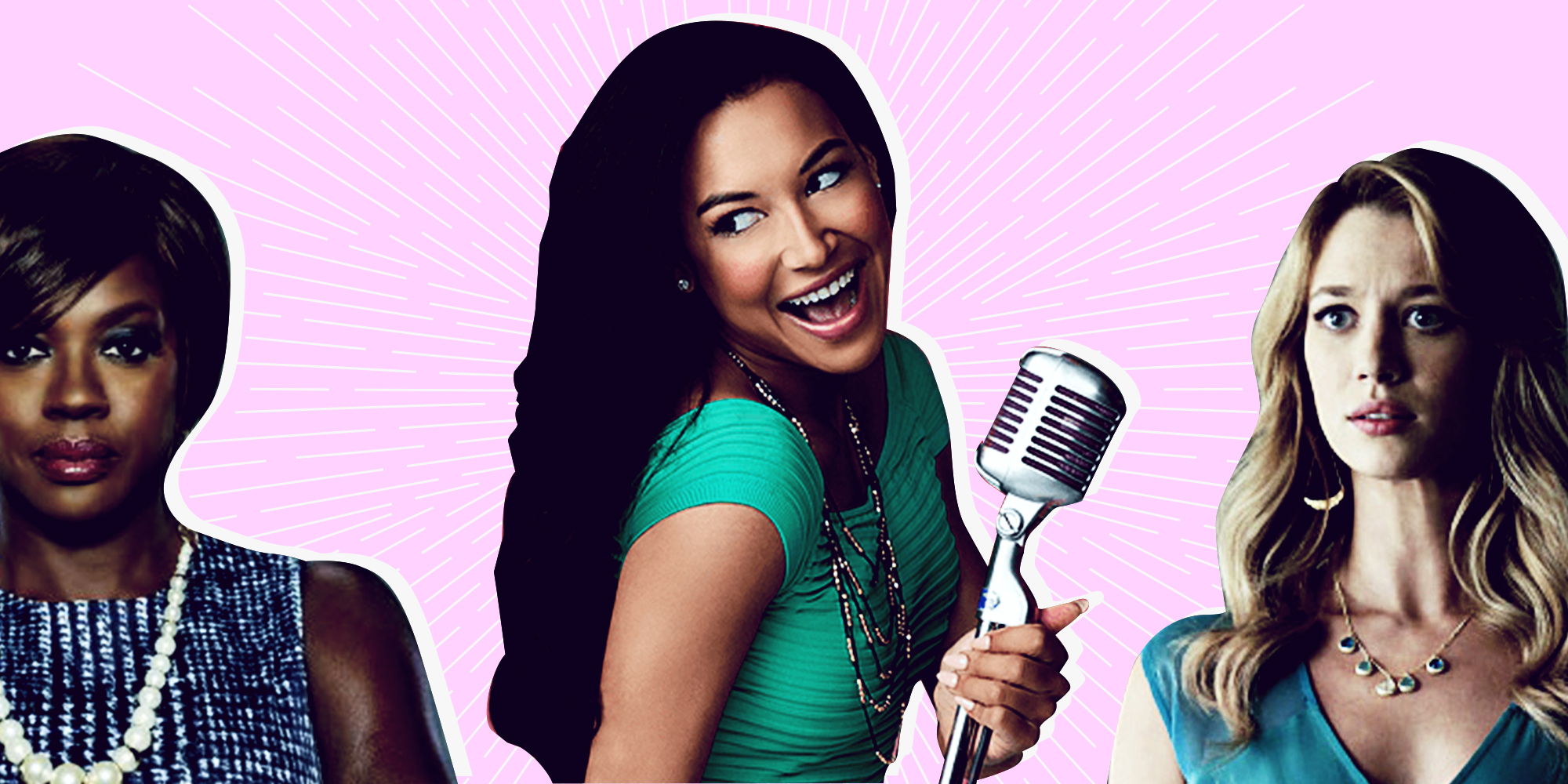
Lesbian and bisexual bad girls, we love ’em — but we’ve actually been on quite a journey to get here! For most of TV history, lesbian and bisexual representation has been a wasteland. And when queer women characters started showing up on TV and in movies, they were almost always portrayed as psychopaths or deviants. This was undoubtedly a leftover from the storytelling tropes set forth by the Hays Code and the Comics Code Authority, both of which banned LGBTQ characters unless they were portrayed as villains (or punished for acting on their gay feelings). And so, for a very long time, the push among activists was for positive representation on-screen. Good women — perfect women, in fact — living lives above reproach. It was important, but it also got pretty boring. In recent years, however, we have seen more and more “bad girls” springing up in the queer TV canon. Not bad people; just, you know, complicated characters who make dubious decisions sometimes and also don’t mind being bitchy when the moment calls for it.
To celebrate our Bad Behavior Issue, our TV team has put together a list of our favorite lesbian and bisexual girls behaving badly.
Santana Lopez, Glee
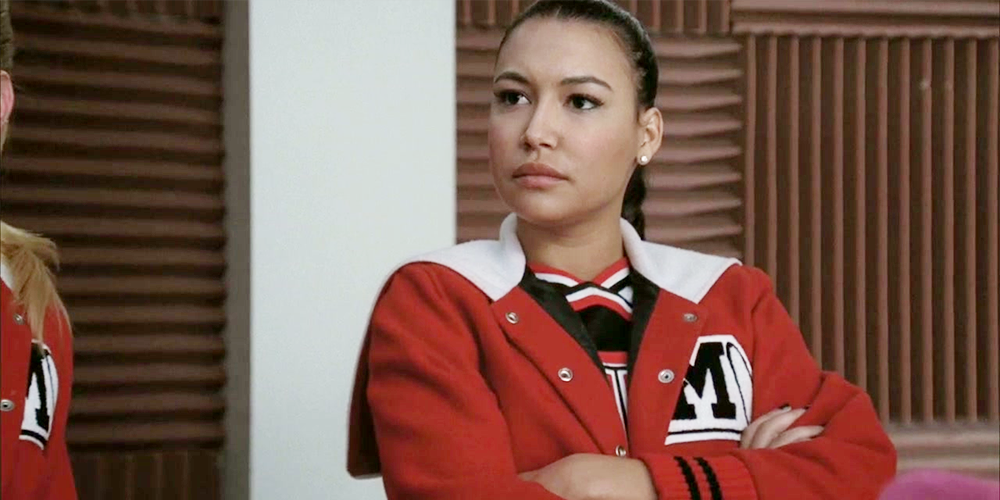
Heather: When someone one day writes the history book on lesbian and bisexual TV characters, at least one entire chapter should be dedicated to Santana Lopez.
Riese: If I’m not the one who actually writes that book, I hope somebody looks me up to write that chapter! Look I’ve already got a very good start.
Heather: She changed SO MANY THINGS in SO MANY WAYS. One of those things is that she was a queer Latinx mouthpiece for the audience, which is revolutionary because straight white people are always the mouthpieces of the audience (or the entry-points for audiences who watch any shows or movies about queer people or people of color because of this gross as hell idea that the straight white experience is the universal one. ANYWAY). The point is, Santana was always a jerk and it was always amazing, but at some point Glee took a turn and allowed her to verbally wail on all the pathetic men on the show on behalf of the audience — and we loved it! She was correct and geez we just wanted to see a fictional character eviscerate Will Schuester the way we personally wanted to eviscerate Will Schuester. (Or punch Finn Hudson.) Santana started out as Regina George and became bitchy Robin Hood. I really, really believe she’s the most important lesbian TV character in history after Ellen.
Valerie Anne: Santana Lopez keeps it real and she’s hilarious. Heather said all the smart things about her, so I’m just going to add that I loved her evolution overall. Her character started out as a one-liner-dropping sidekick meant to make Quinn look good and she grew so much over the years. And I loved that when she came out, it wasn’t like she was magically cured of her insult-slinging ways; she was still fully Santana in every way… just gayer.
Riese: “The only straight I am is STRAIGHT-UP BITCH.” Iconic!
Carmen: Riese! That was going to be my opening line! You beat me to it!
“The only straight I am is STRAIGHT-UP BITCH” is one of the most empowering lines ever uttered by a queer woman on television. Come at me in the comments! I’m willing to go to war over this. Santana bristled, but she loved. She really loved. She loved without being forced to be soft. That’s not something that we often see in “bitchy” television characters, especially in those written by men. (The fact that Santana Lopez was allowed to have such complexity and a consistent character core over six seasons is quite frankly, amazing, considering Ryan Murphy and Brad Falchuk’s difficulty writing the women on Glee. #GleeHatesGirls, amirite?)
I’m so glad we’re opening with Santana. She was the first person who came to my mind when we were assigned this roundtable. Here’s why: Santana was allowed to feel rage. Real rage. When she was in the closet, she took all the hate she was feeling about herself and she spewed it out. Maybe that sounds off-putting in retrospect, but let me tell you – it was cathartic. Kurt, Glee’s other resident gay, was a sympathetic queer character. He had a bit of a snarky sense of humor, but when he got bullied, he cried, and the audience cried with him. When he came out, his father loved him and hugged him and then we got to cry some more. His storyline was hopeful and optimistic. I don’t want to take anything away from Kurt or his importance in television history. But here’s the thing about Santana, she was the bully. She wasn’t a saintly gay. She found it hard to love herself, so in turn she made it hard to love her. She told her abuela that she had to come out because every day felt like a war. She was tired of fighting with herself. I wept. I knew that pain. So many of us do. We know what it feels like to tear yourself in two from the inside out, to put up armor and hope that no one would notice. My armor was a smile, Santana’s was an insult. And bless her for it.

Petra Solano, Jane the Virgin

Heather: Like so many characters on this list, Petra started out as a one-dimensional foil but became something so much greater. What I especially love about her is that that she realized she’s bisexual — which was so sweet and so hilarious and so her — but coming out didn’t make her lose her edge. Yeah, she’s in love with another woman. And yeah, those feelings are making her heart go berserk. But that doesn’t mean she’s going to stop scheming or that she’s not going to murder someone if she needs to! I also love how she cuts right through people with the sweetest fucking smile.

Villanelle, Killing Eve
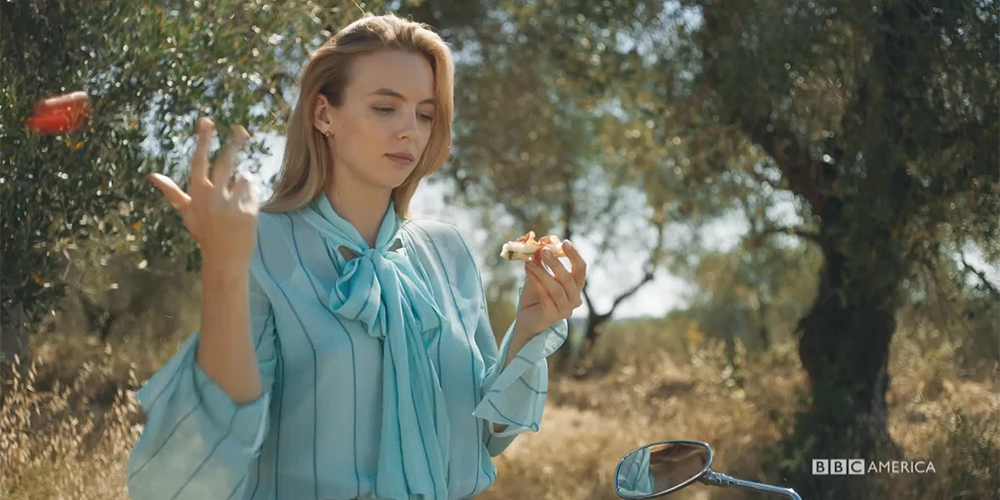
Carmen: You know those viral internet memes of puppies who get in the trash, or chew up the couch, or some other awful act – but then their owner has them hold up a sign that says “I’m sorry” and your heart just melts? Because who can stay mad at a cute puppy with their cute puppy eyes and big puppy smile? That’s exactly how I feel about Villanelle. She murders and she mayhems, but every time she looks back at the camera with her eyes and I just want to give her a hug instead! “Awwww! Who’s a good assassin? You’re a good assassin! Yes, you are! Yes, you are! Mommy loves you!”
Valerie Anne: Villanelle is now my go-to example of how a show can take a trope and flip it on its head. On paper, you might think Killing Eve fell prey to the “crazy bisexual” trope, but there’s a fine line between, “This person has a psychological disorder as evidenced by this sexual deviance” and “this assassin happens to be bisexual.” It’s not shown as deviance or something that indicates she’s dangerous; in fact, it seems to be what’s keeping her from killing for the first time maybe ever. Also she’s just great. Funny and charming and surprising. I love her almost as much as Eve does.
Riese: Villanelle is the long-haired butch lesbian assassin of my dreams. She makes eating shepherd’s pie out of a tupperware container look sexy! Sure, she’s evil and kills people, but isn’t it nice we’ve finally gotten enough TV representation that we can enjoy a complicated, strong, smart, conniving female character like Villanelle without worrying that she’s the only representation we’ve got?

Alex Nuñez, Degrassi
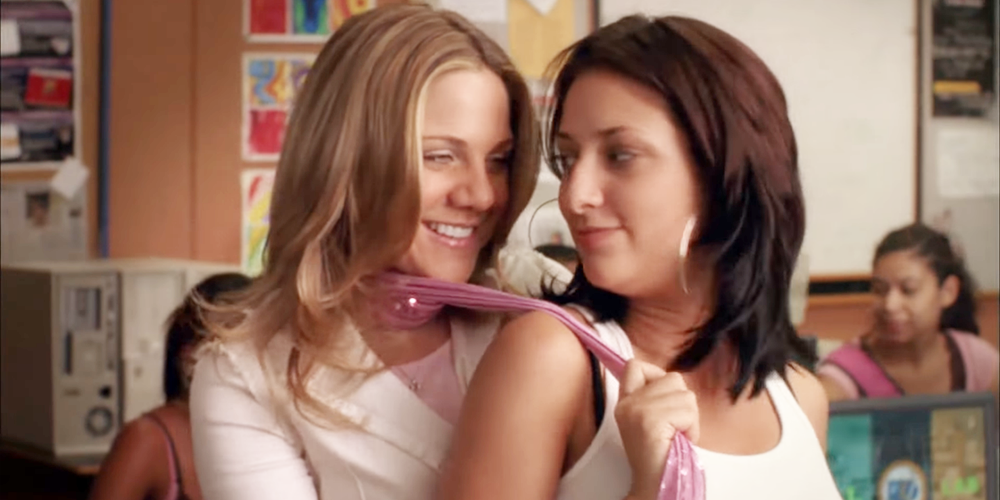
Riese: Much like Ashley Davies, who we discuss later in this roundtable, Alex is my physical type and the type of “bad girl” I fantasized about frequently as a pre-teen and teenager. But because it is Degrassi, and because Degrassi goes there, Alex’s “badness” isn’t as straightforward as it seems. A great deal of it is how she’s learned to cope in a world where the deck is stacked inevitably against her and frequently veers on collapse. And as much as I loved her storyline with Paige, it didn’t seem like Paige had any hope of truly understanding where Alex came from or what she was dealing with, as was made plain when Alex started working at the strip club and Paige couldn’t handle it.
Natalie: One of the hallmarks of lesbian or bisexual characters on television during a certain era is that they couldn’t be bad — even on a show with a storytelling history as progressive as Degrassi, writers felt like they were taking enough of a gamble by having a gay character at all; they didn’t want to push the envelope too much. As a result, in the rare instance that you had a lesbian or bisexual character on television, they were usually perfect and sexless.
I mention that here because when Alex Nuñez (Deanna Casaluce) comes to Degrassi, she’s a legit bad girl. She steals stuff with her then-boyfriend, Jay; she gets into multiple fights at school; she threatens to out Marco to the entire school; and she helps Jay and Spinner prank Rick Murray, a decision that had some awful unintended consequences. She’s a bad girl in the truest sense.
But the moment she starts developing feelings for another girl? The moment the writers start to lay the groundwork for an “enemies becoming friends becoming more” storyline between Alex and Paige? The bad girl we’d known for two seasons disappears. You couldn’t be a lesbian on TV and be bad — not circa 2005 — so they femmed Alex up and put her on the straight and narrow, so to speak. She graduates, she sets career goals, she goes back to school to boost her grades for University, she joins the lacrosse team… she is perfect.
When they tried to rewrite her as a bad girl again in Season Seven — which was both terribly written and implausible, given how her character had developed — it fell flat and the character was written off the show after that.
(And, yes, I was salty when Drake’s recent Degrassi reunion video, “I’m Upset,” didn’t include an Alex cameo… but I guess bringing back a character that once moonlighted as a stripper hit a little too close to home for Adonis’ daddy.)

Daddy, Orange is the New Black

Riese: I’M ONLY HUMAN
Carmen: I know I shouldn’t love Daddy. She was a high-end pimp on the outside, who used her sexuality to recruit women who otherwise perhaps wouldn’t have been interested into sex work. She uses those same skills on the inside, recruiting “Daddy’s Girls” as drug dealers to fellow inmates. Objectively speaking, that is pretty loathsome. At the same time, in her own way, she protects her girls. She has this twisted code of honor that just makes my heart thud in my chest. To paraphrase Riese from our OINTB season six review, sometimes you just need a nice butch to take care of you, you know? Daddy wants to be that butch. And listen, despite myself, I want her be.

Pam Swynford De Beaufort, True Blood

Riese: The Mommi of Bitchy Vampires, be still my heart. “I’m so over Sookie and her precious fairy vagina,” she crowed, and the world nodded along with her. Of course, she finally melted her icy heart just a tad to make room for Tara, which was one of those ships you could only dream of sailing. Women like Pam are alluring because they have strong opinions and speak them with confidence, regardless of the consequences. For somebody like me, who is obsessed with whether or not everybody likes me!, that’s so alluring and liberating.

Ashley Davies, South of Nowhere
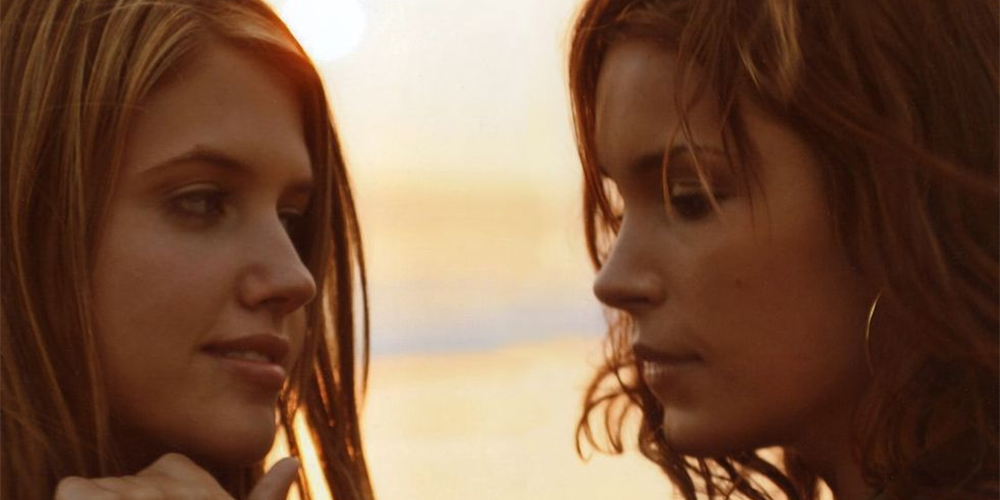
Riese: Ashley is everything I dreamed of as a teenager when I dreamed of bad girls, which I did a lot. I wrote a lot of novels and short stories back then about shy but beautiful girls with wild best friends who whisked them away into a world of danger and edginess — with the exception of all my All Over Me inspired works, these girls always looked a lot like Ashley Davies. Effortlessly roll-out-of-bed beautiful, dark hair, olive skin, glossy lips.They had childhood trauma and absent parents and had done drugs and kissed boys, maybe even had sex with boys, but their real true love was me. This is how most of my friendships were, I guess, including the one with the first girl I ever kissed.
By the time I realized I was gay in my early/mid twenties I’d become the bad girl I always dreamed of being seduced by. Or maybe it’s not really “somehow,” maybe it was deliberate, that way we transform from wanting a thing to wanting to be that thing. Still, back then, in high school? If Ashley Davies had convinced me to skip school and reconsider my sexuality I would’ve swooned. I would’ve panicked about skipping school but I think it would’ve been worth it.
Valerie Anne: Ever since I saw South of Nowhere, all I’ve wanted was for a girl to invite me to ditch our responsibilities and go on a roadtrip to anywhere and eat gas station donuts while we get lost but don’t care. I’ve always wanted a girl who was a little better at breaking the rules than me who could take me on an adventure. And I know it’s because it’s the show that helped me finally come out to myself and accept my queerness, and as a full-grown adult I know that a rule-breaker would probably stress me out in the long run, part of me is still looking for the Ashley to my Spencer.

Annalise Keating, How To Get Away With Murder

Carmen: It’s not that Annalise is bad. It’s really not. I wanted to include her in this roundtable because she’s not written to be likable. She’s sympathetic, yes. You understand the tough decisions that she makes, for sure. And to be clear, I more than like Annalise. I love her. But, it’s refreshing to have a female protagonist, and a black one at that, not be written with my love of her in mind. Most women on television apologize for existing. They smile and they wear bright colors. Annalise’s depression is messy, not unlike Tony Soprano. Life has her by the ropes a lot, it’s hardened her, not unlike Walter White. She has all the makings of a “pained white guy anti-hero” trope, except she’s not a straight white guy – and that makes all the difference.
Annalise Keating openly struggles with her alcoholism, she doesn’t always make the best sex choices, and as Natalie is going to elaborate below, she doesn’t always love herself enough to set up healthy boundaries and cut out the toxic people in her life. Her girlfriend loved her brighter than the sun, and Annalise was so tortured by the idea that she didn’t deserve such a love that she ran from it. That kind of “bad behavior” is honest. It’s relatable and real. That’s why I wanted her on this list.
Natalie: Given how much time HTGAWM devotes to having people tell Annalise Keating how terrible she is, it’s understandable that so many are under the impression that she’s an awful person. Every single week we have to endure one sanctimonious person after another telling Annalise how terrible she is and how everything that’s bad that’s happened to them is her fault… so, if you walk away from that believing that Annalise is bad, I could hardly blame you.
You would, however, be very, very wrong.
Annalise Keating is not bad. Almost all of her problems stem from the fact that she won’t cut the toxic people in her life. The people around her are murderers and emotional abusers and Annalise absorbs all their hatred because, on some level, she feels like she deserves it. She lost her child, because of them; she lost her house, because of them; she lost her freedom, because of them; she nearly lost her livelihood, because of them; and she almost lost her life, because of them. Nearly every bad thing that’s happened to her since this show debuted, it’s all because of them.
Everyone around her is unequivocally terrible but Annalise Keating? Her only fault is that she won’t leave them behind.
Sorry (#notsorry), y’all know I have a lot of feelings about this.

Sameen Shaw, Person of Interest

Valerie Anne: Shaw is an assassin and she’s stone-faced and snarky and has firewalls up that would have lasted centuries if Root hadn’t hacked her way through them. But when it came down to it, she sacrificed herself for her team, and protected them through simulation after simulation. She’s a badass who loves one (1) dog and one (1) human-turned-machine and I love her.
Riese: Much like Villanelle, Shaw has that Spike thing going on where she’s bad to the bone until that one special somebody comes along and finds a little crack in her armored heart. Who doesn’t want to be that somebody? Especially when that somebody is partially as sexy as she is BECAUSE SHE’S SO F*CKING SMART!?

Delle Seyah, Killjoys

Valerie Anne: When Delle Seyah first popped up on Killjoys, I thought she would be on a few episodes at best, a fun foil for Dutch to hate-flirt with, a reminder of everything Dutch could have been if she had stayed on her path. But she became a true and proper villain, and toward the end of Season Three entered a relationship with someone that shared Dutch’s face but few of Dutch’s values. It was just… perfect. And this season it seems like she’s going to be forced to continue to work WITH Dutch and her team instead of against her, and little makes me happier than a villain-turned-reluctant-hero.

Marceline the Vampire Queen, Adventure Time

Heather: Marceline is my favorite Adventure Time character (and Adventure Time is one of my all-time favorite shows), which is a little bit odd because I’m usually not into brooding vampires. (Maybe that’s because brooding vampires are usually men?) Marceline is more than just her angst, though. And she’s more than just her occasional mean-spiritedness. Adventure Time digs into her past to explore her childhood trauma, her fears, her abandonment, and then it zooms to her today and allows her to express what is actually a whole lot of anxiety and legitimate, clinical depression. She grows so much over the course of this show, finally even allowing herself to let go and love Bonnibell. She’s still kind of a jerk. She’ll always be kind of a jerk. But she’s a sweetheart, too.

Rosa Diaz, Brooklyn Nine-Nine
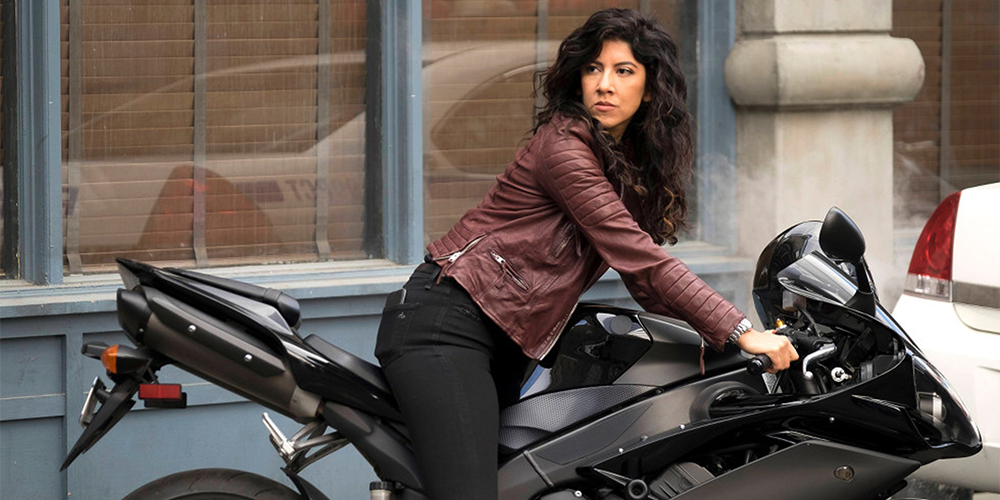
Heather: It is so rare to find a character like Rosa Diaz on TV — a curmudgeonly queer Latina who is also, in many ways, the heart of her squad. She’s got all the hardass things: the motorcycle, the leather jacket, the scowl, the swagger, the machetes. She’s also got a gooey caramel center. The juxtaposition is what makes her so great. Adopting a puppy and immediately threatening to kill herself and everyone else if anything ever happens to it. Offering to mercy kill her best friends. Going to war in the great Nora Ephron vs. Nancy Meyers showdown she started. Plus anyone who is real enough to say, “I don’t like small talk; let’s drink in silence” will always be a hero to me.

Nikki Wade, Bad Girls
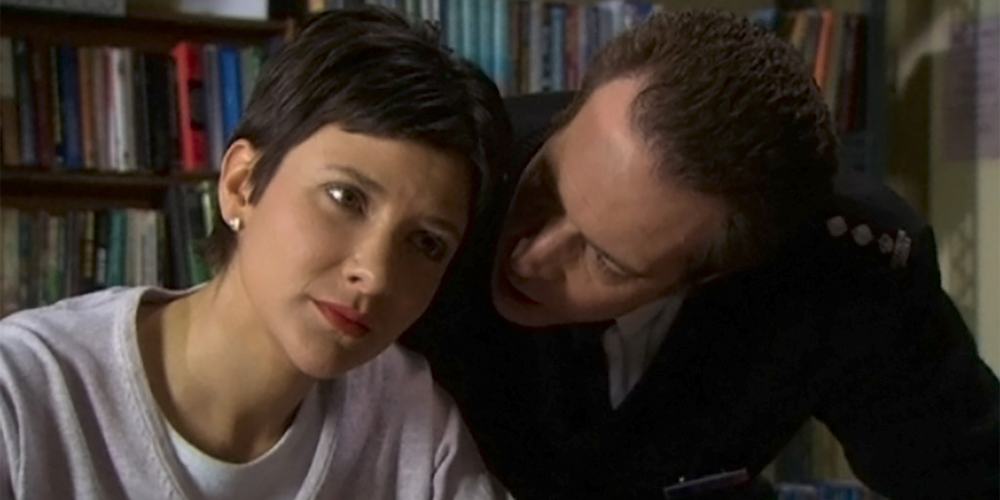
Heather: I’m going to write more about Nikki Wade in my Bad Behavior Issue piece about Bad Girls but I’m adding her here because she’s the very first TV character that I found myself rooting for — and hard — who didn’t follow rules and who also hated men. I’d never let myself toy with the idea that misandry was okay because my whole life I’d been hearing pastors and Sunday School teachers talk about man-hating feminism as satan’s recruiting ground. I met Nikki almost as I was walking out of the doors of a Baptist church for the last time and she was in jail for murdering a man who tried to rape her girlfriend and she was not fucking sorry. She changed my life.

Delphine Cormier, Orphan Black
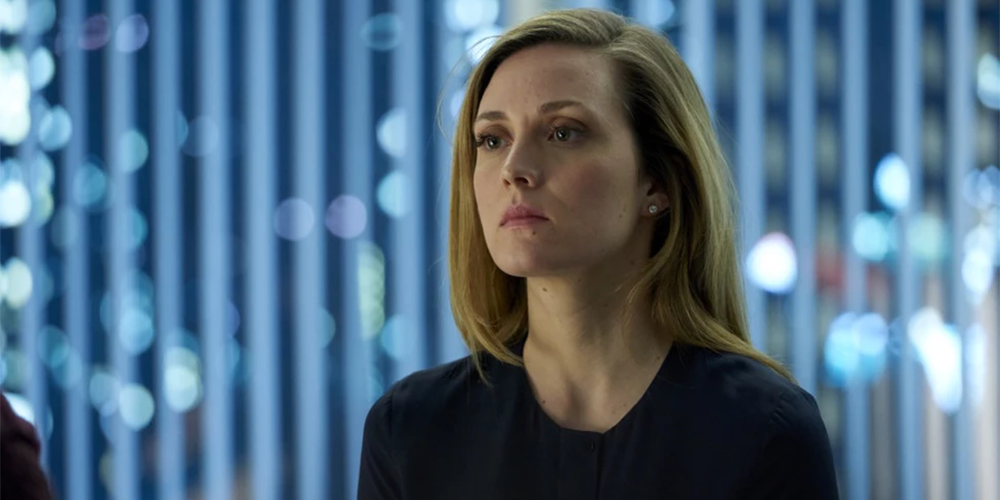
Heather: I checked out of the “is Delphine good or bad” debate pretty early on in Orphan Black because two things were obvious about her after the season one finale: 1) She was Slytherin Head Girl, and 2) She loved Cosima more than anything in the world. Everything after that was just a horrifying joy to watch because I never doubted Delphine’s loyalty, never doubted Cophine’s endgame. I just sat back and watched her do her machinations and smash her thumb into Rachel’s empty eyesocket and maneuver around all those biology wackos on that fantasy island with her brilliant, cunning mind. Also, sometimes, I just felt like Felix when she came wheeling up in her luxury sedan with her straight hair in the season three premiere, whipping off her sunglasses (even though it was overcast and not even sunny at all outside!). He just looked over his shoulder, not shocked to see her, and said, “God, she looks good.” (Her evil straight hair was my favorite.)
Valerie Anne: Delphine made some bad, bad choices for all the right reasons throughout the course of Orphan Black. She hurt Cosima over and over all in the name of helping her, and it got to the point where even I started to wonder whose side she was on. But like Heather said, one thing was always true: Delphine loved Cosima, and Cosima made it clear that loving her was loving her sisters. So she made the right choices in the end.

HG Wells, Warehouse 13

Heather: I had a hard time deciding between HG Wells and Stahma Tarr for this list. Both legit psychos in their own ways, both played by Jaime Murray, but in the end I went with the one who didn’t murder her girlfriend. Helena’s brain and heart kind of snapped when her daughter was murdered and everything after that was about getting revenge — even of it meant taking out her pain and rage on the whole of humanity. She was going to destroy the entire planet! But you know who she couldn’t pull the trigger on? Myka Bering. Wells and Bering. Bering and Wells. Over and over again, Helena sacrificed herself so that Myka could live, because Myka made he believe some humans could be good (really, really good). And also because she was in love with her. Don’t get me wrong; HG still did plenty of dubious, illegal, ethically murky things, but at least she didn’t try to blow up the continent after that one time.

Gail Peck, Rookie Blue
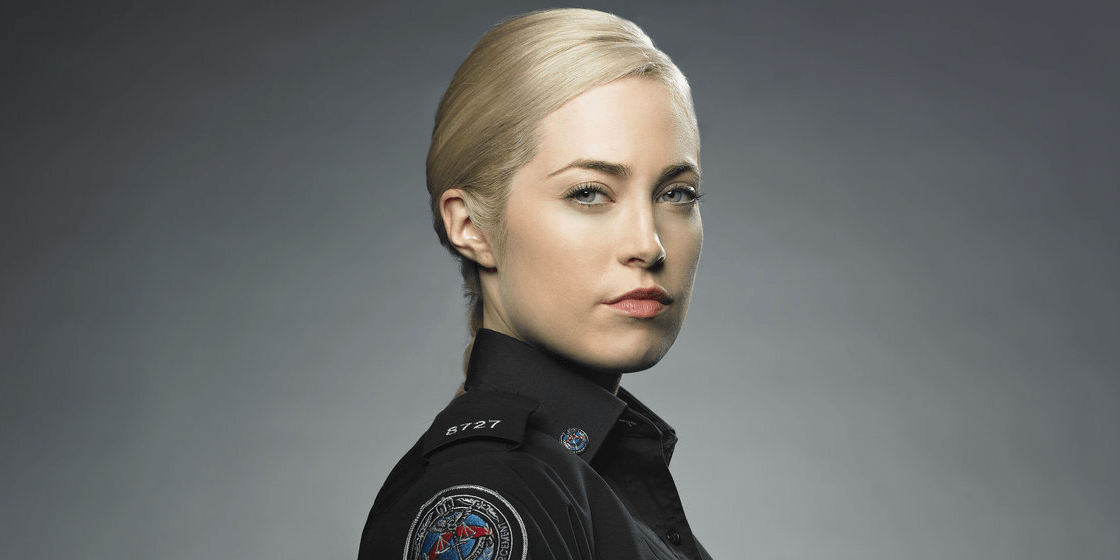
Valerie Anne: I hesitated about putting Gail Peck in here because she’s a hard outer shell with a soft, gooey center, but then Heather added Rosa Diaz and said I could think of it like “jerks with a heart of gold” and I knew Gail fit here. You see, if you asked Gail, she’d tell you she was a cold-hearted bitch who hated people. She’s literally said that on the show, “I hate people.” She stands still as a scarecrow when her coworkers throw their arms around her, and her coworkers wince when she slings insults their way. One of my favorite things about Gail Peck is that she could be 1000% snark, practically growling at whoever she was partnered with for the day, but then she would encounter a little kid and be the sweetest, gentlest soul. It was proof she wasn’t bad, not really. She just had a very low tolerance for bullshit and pleasantries, and I can respect that.

Violet Cross, Harlots

Riese: Talk about an intense Good Girl / Bad Girl matchup — Violet, a Harlot in 18th century England, manages to win the heart of Amelia, the daughter of a religious zealot who has devoted herself to preaching against the vocation of women like Violet. In Season Two, she keeps her pride against all odds and when an old white man who she knows is a patron of sex workers talks shit about sex workers, she spills hot soup on his crotch! That’s my kind of girl.

Cheryl Blossom, Riverdale

Kayla: Is there anything that says “bad girl” more than accessorizing with a gothic candelabra? I say NAY! Cheryl Blossom enters Riverdale as the resident pom-pom-clad mean girl but then proves to be something else altogether: a fire-starting, bow-wielding vigilante who has a homicidal father and a violently homophobic and controlling mother and who is really tender and sensitive and HURTING underneath that armor of matte red lipstick and perfect hair. She literally burns her own house to the ground and cuts off her mother’s oxygen supply in order to let her know she’s in charge now. And you’re rooting for her the whole time. She’s “bad” because that’s what people have told her she is her whole life.
Carmen: When Santana Lopez left our screens, I wasn’t sure if another high school bad girl could ever walk back into my heart. Then came blood drawn lips and fire engine hair. A new generation of high school HBIC in a too tight cheerleader uniform. Cheryl’s her own kind of dark avenger, willing to use her family’s influence and power for good instead of evil. For as much as she helps others, Cheryl’s still a bit of an outsider. Betty and Veronica come in a pair, same with Archie and Jughead. Who is going to make time for Cheryl? That kind of loneliness is palpable, no matter how hard she tries to hide it behind the perfectly selected couture. Cheryl Blossom isn’t who you think she is when you first lay eyes on her – a rich princess with piles of money, but no feelings or emotion. Cheryl is all emotion. It pours out, overflowing from beneath her icy mask. That’s what makes her great.

Jenny Schecter, The L Word
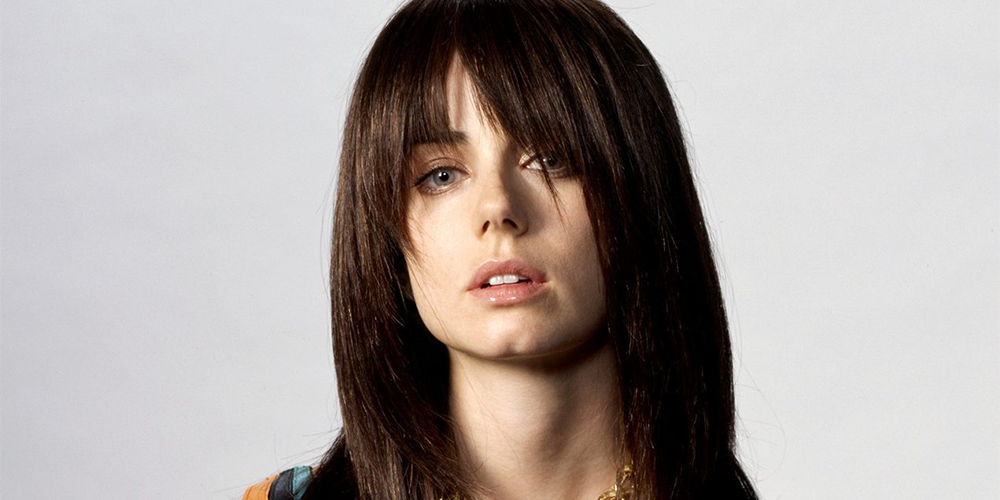
Carmen: Because really, if you look deep in your heart, who else could we possibly end this roundtable with?
Jenny Schecter, the bad girl who started it all. ![]()








